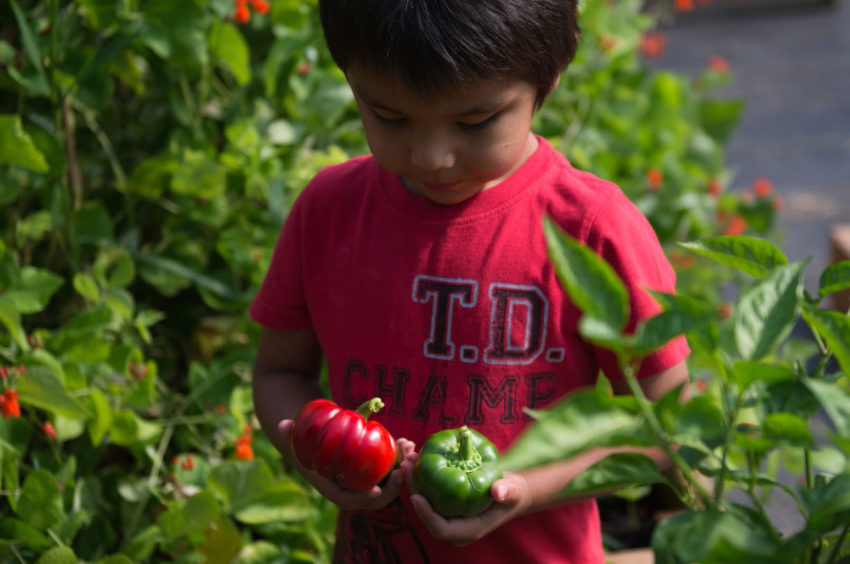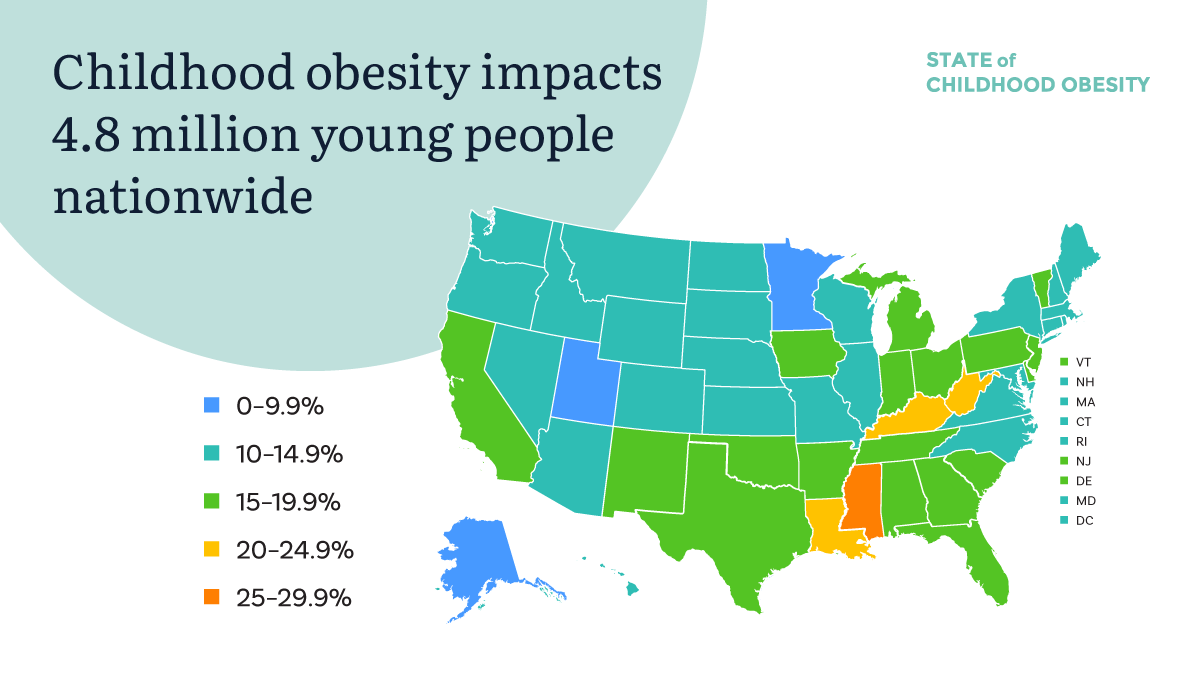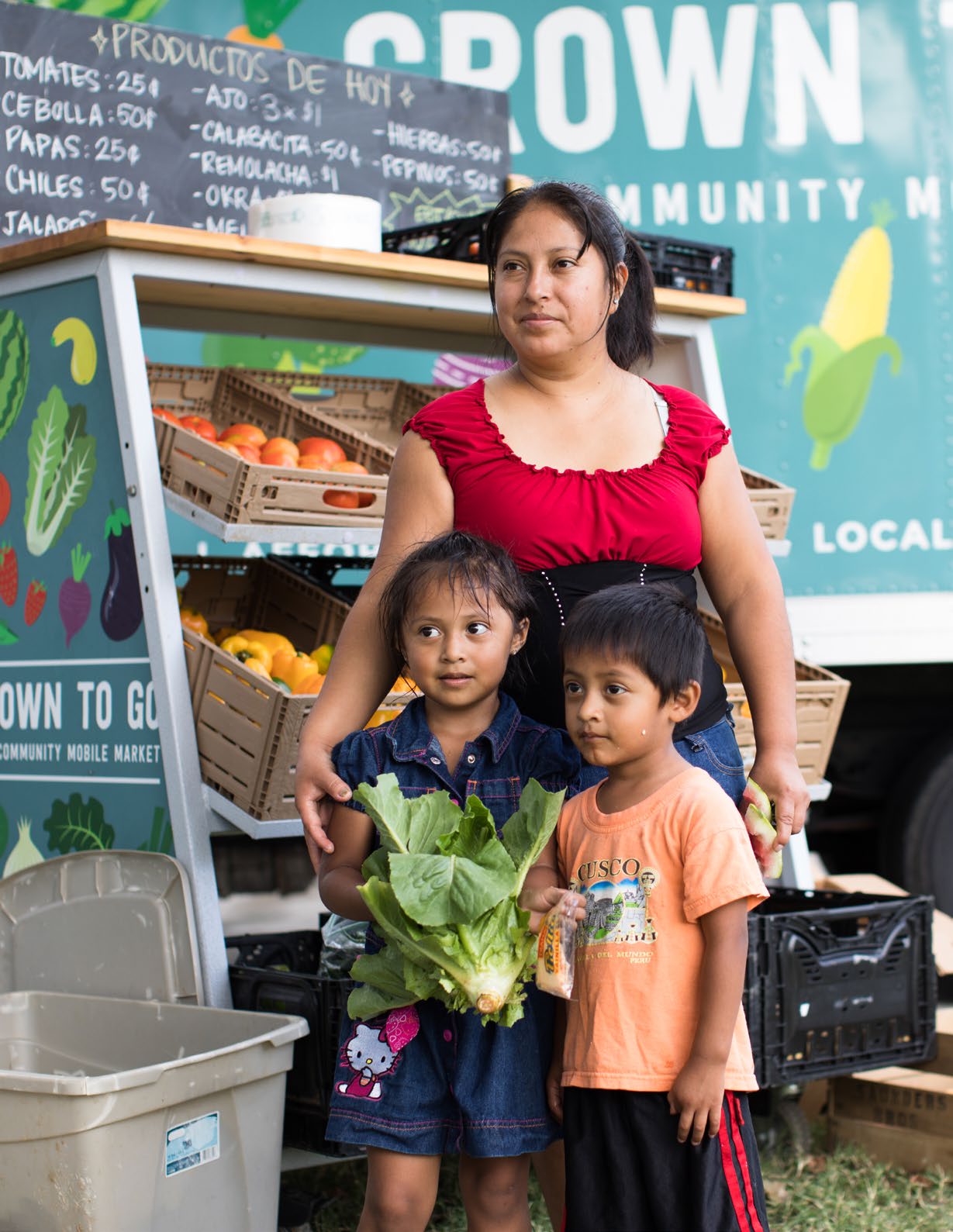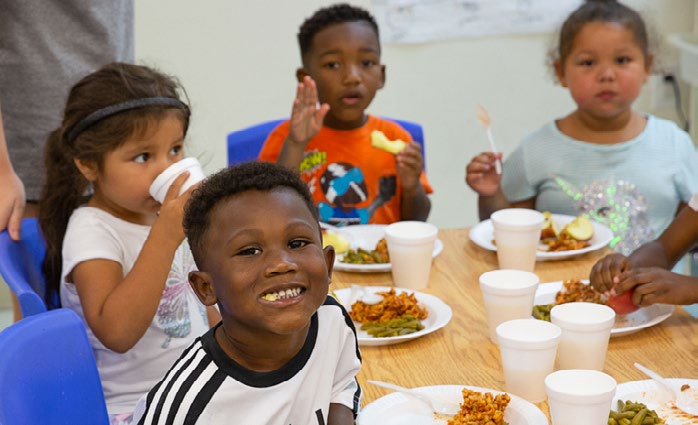
Share On Social!
Latino kids have higher childhood obesity rates than their peers at nearly all age groups, according to a new report.
For example, the newest data show Latino kids ages 10-17 have higher obesity rates (19%) than their white (11.8%) and Asian (7.3%) peers. They also have higher rates than the nation (15.3%), but lower rates than black kids (22.2%).
The new stats are part of a bigger report, the State of Childhood Obesity: Helping All Children Grow up Healthy from the Robert Wood Johnson Foundation (RWJF). It highlights big data on childhood obesity, with policies and stories to drive change.
“These new data show that this challenge touches the lives of far too many children in this country, and that Black and Hispanic youth are still at greater risk than their White and Asian peers,” said Dr. Richard Besser, head of RWJF. “We’re working alongside others to implement shifts that will make it easier for kids and their families to be healthy.”
What Is the State of Latino Childhood Obesity?
Here is some key data in RWJF’s State of Childhood Obesity report:
- Overall, Latino children ages 2-19 had the highest obesity rates (25.8%) among all racial/ethnic groups.
- Latino children ages 2-4 in the WIC program had higher obesity (16.4%) than all groups, except American Indian/Alaska Natives (18.5%).
- Latino children in high school tied with black children for the highest obesity rates among groups (18.2%).
 In a further exploration of the newest data on 10-17-year-olds, here are the biggest Latino/white disparities by state:
In a further exploration of the newest data on 10-17-year-olds, here are the biggest Latino/white disparities by state:
- Rhode Island: 56.8% of Latino kids are obese or overweight (29.4% of white kids).
- Maryland: 52.6% of Latino kids are obese or overweight (27.7% of white kids).
- Pennsylvania: 51% of Latino kids are obese or overweight (31.2% of white kids).
- Nebraska: 50.7% of Latino kids are obese or overweight (21.5% of white kids).
- Georgia: 50.7% of Latino kids are obese or overweight (27.4% of white kids).
- Wisconsin: 47.5% of Latino kids are obese or overweight (22.3% of white kids).
- North Carolina: 46.1% of Latino kids are obese or overweight (23.5% of white kids).
- Florida: 45.4% of Latino kids are obese or overweight (25% of white kids).
- Idaho: 44% of Latino kids are obese or overweight (21% of white kids).
- South Carolina: 43.1% of Latino kids are obese or overweight (22.1% of white kids).
Why Is Latino Childhood Obesity So High?
Because health equity is out of reach.
Poverty and food swamps are prolific in Latino neighborhoods. Fast food outnumbers supermarkets and farmers’ markets, according to a Salud America! Research Review.
 Latinos also face discrimination, marketing of junk food, and less access to recreational spaces.
Latinos also face discrimination, marketing of junk food, and less access to recreational spaces.
“[These obesity disparities] are a result of discriminatory policies and systems that have been in place for decades,” Besser said. “However, we have the power to change these outcomes and make our nation a more equitable society.”
Why Is Latino Childhood Obesity a Big Concern?
The Latino population is rising.
And this group’s higher rates of obesity mean higher risk for diabetes and many types of cancers.
Obesity also is estimated to increase national healthcare spending by $149 million annually. Unhealthy eating is the leading cause of premature death in the United States.
What’s Working to Reduce Latino Childhood Obesity?
The State of Childhood Obesity report also features what’s working.
Over the last few years, more than 30 million children eat healthier school breakfasts, lunches, and snacks, thanks to the updated nutrition standards ushered in by the Healthy, Hunger-Free Kids Act of 2010.
The obesity rate among children participating in WIC declined from 15.9% percent in 2010 to 13.9% percent in 2016. CDC researchers cited recent healthy updates to the WIC food package as part of the decline. The foods and drinks participating families can purchase are healthier.
Researchers are helping, too.
The National Collaborative on Childhood Obesity Research (NCCOR) recently released its Measures Registry, Measure Registry User Guides, and Measures Registry Learning Modules platform to accelerate obesity research.
What Else Can We Do to Reduce Latino Childhood Obesity?
In September 2019, the State of Obesity report made 31 recommendations to reduce adult obesity.
 Now the State of Childhood Obesity report adds these key recommendations:
Now the State of Childhood Obesity report adds these key recommendations:
- USDA should maintain nutrition standards for school meals that were in effect prior to December 2018. It should also maintain current nutrition standards for school snacks.
- As USDA revises the food package for WIC, all recommendations should be scientifically based.
- CDC should have adequate resources to provide grants to all 50 states to implement multi-sector campaigns to address obesity.
- State policymakers should allow cities and counties the flexibility to regulate, tax or otherwise enact strong legislation related to children’s health and healthy communities. Many cities are using sugary drink taxes to decrease consumption. These include Berkeley, Calif., and Philadelphia.
The recommendations also suggest USDA should rescind proposed changes to the Supplemental Nutrition Assistance Program (SNAP), or food stamps, that would cause millions of participants to lose their benefits.
About one-third of children age 4 or younger participate in SNAP.
You can speak up now to save SNAP!
“The disparities in obesity rates among blacks and Hispanics, both young and old, are shocking – we can and must do better,” said Nancy Brown, American Heart Association CEO. “Our nation will continue to be in the midst of this public health crisis until we drive transformative change in every community. We have the tools. We just need to employ them.”
Explore More:
Maternal & Child HealthBy The Numbers
142
Percent
Expected rise in Latino cancer cases in coming years



